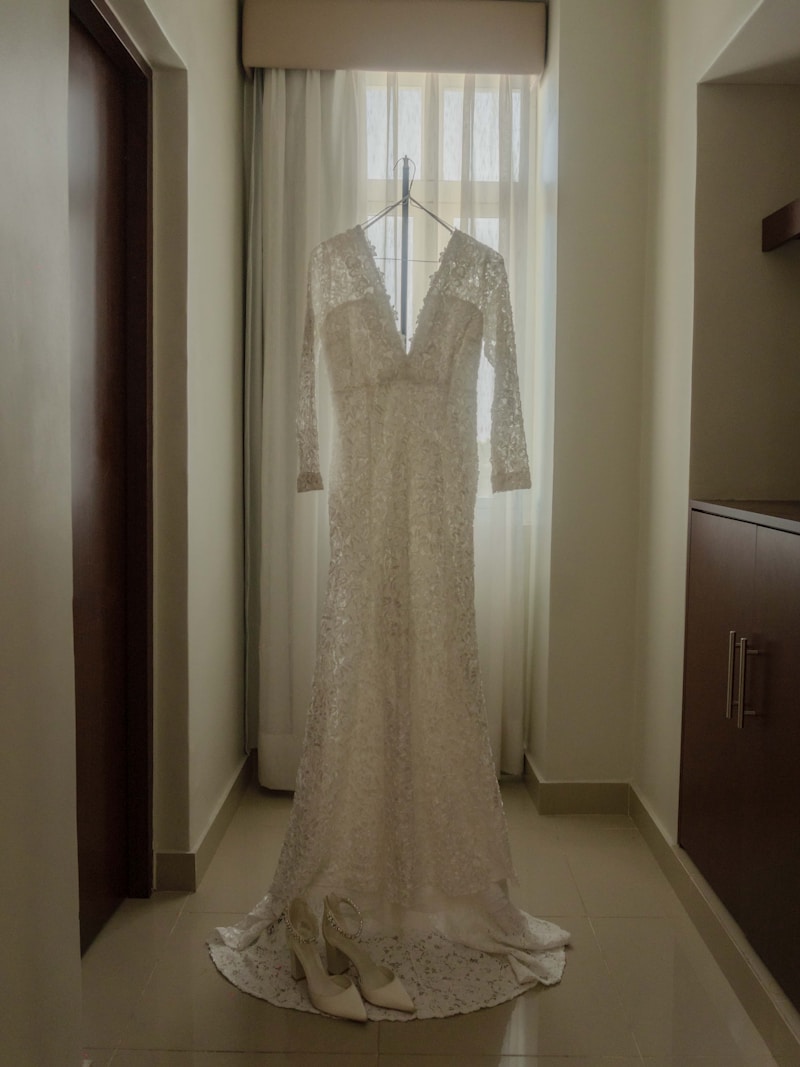Bridal Fashion History: A Comprehensive Examination
Bridal Fashion History: A Comprehensive Examination
Bridal fashion is a captivating aspect of clothing history that reflects not only the style of the times but also cultural, social, and even political influences. This article delves into the evolution of bridal attire, exploring its historical significance and the various trends that have shaped the way brides dress on their wedding day. From ancient traditions to modern influences, we will uncover the fascinating tale of bridal fashion.
The Origins of Bridal Fashion
Bridal fashion can be traced back to ancient civilizations where wedding ceremonies were rooted in tradition. In ancient Rome, brides wore a tunic called a tunica recta, symbolizing purity and modesty. Conversely, in ancient Greece, brides adorned themselves with flowing white garments, signifying their connection to the gods.
Bridal Fashion in the Middle Ages
The Middle Ages saw the emergence of elaborate bridal gowns, often reflecting the social status of the bride. Wealthy women wore sumptuous fabrics like silk and velvet, embroidered with gold and silver threads.  This period also introduced the famous bridal veil, which signified modesty and protection from evil spirits.
This period also introduced the famous bridal veil, which signified modesty and protection from evil spirits.
| Era | Bridal Attire | Significance |
| Ancient Rome | Tunica Recta | Purity |
| Ancient Greece | Flowing White Garments | Connection to Gods |
| Middle Ages | Elaborate Gowns | Social Status & Modesty |
The Victorian Era and the Introduction of White Bridal Gowns
The Victorian era marked a significant transformation in bridal fashion with the introduction of the white wedding gown, primarily popularized by Queen Victoria when she married Prince Albert in 1840. Her choice of a white gown, made of silk satin, defied the traditional colors that were often associated with weddings. This bold choice created a trend that resonated with women across the globe, symbolizing innocence and purity.
Bridal Fashion in the 20th Century
The 20th century brought a plethora of changes to bridal fashion, significantly influenced by social movements and cultural shifts. The Roaring Twenties featured shorter hemlines and flapper-style dresses, reflecting the liberation of women. In contrast, the post-war years led to a resurgence of traditional silhouettes that evoked nostalgia for the past.
Key Styles from the 20th Century:
- 1920s: Flapper-style gowns
- 1950s: A-line dresses with cinched waists
- 1970s: Bohemian-inspired gowns with flowing fabrics
- 1980s: Bold and extravagant designs with puffed sleeves
Modern Bridal Fashion Trends
Today, bridal fashion showcases a diverse array of styles and influences, catering to the preferences of contemporary brides. Here are some notable modern trends:
- Minimalism: Simple, clean lines with understated elegance.
- Eco-Friendly Options: Sustainable materials and ethical production practices.
- Cultural Fusion: Blending traditional elements with modern designs.
- Customizable Gowns: Brides can now choose from various styles to create a unique look.
The Influence of Celebrities on Bridal Fashion
Celebrity weddings have a significant impact on bridal fashion trends. For instance, when celebrities like Kate Middleton and Meghan Markle wed, their bridal gowns became the center of attention and influenced countless brides around the world. The gowns became iconic and represented contemporary fairy tales, merging tradition with modernity.
Bridal Accessories: Completing the Look
No bridal ensemble is complete without accessories. From veils and tiaras to shoes and jewelry, each accessory plays a pivotal role in the overall look. For example, the choice of veil can dramatically change the aesthetic—long, flowing veils add a romantic allure, while shorter styles lend a vintage vibe.
Jewelry Trends in Bridal Fashion
Jewelry also plays a crucial part in enhancing a bride’s appearance. Classic diamond pieces continue to reign supreme; however, many modern brides are opting for unique gemstones and vintage designs to reflect their personalities. Statement pieces like chandelier earrings and layered necklaces are becoming increasingly popular.
Bridal Fashion Around the World
Bridal attire varies widely across cultures and regions, showcasing a beautiful tapestry of traditions. In India, brides often wear vibrant red or gold saris, adorned with intricate embroidery and jewelry symbolizing wealth and prosperity. In contrast, Asian cultures may incorporate traditional dresses like the qipao in China or the hanbok in Korea. Understanding these differences enriches the overall appreciation of bridal fashion globally.
Summary and Recommendations
Bridal fashion has come a long way through history, evolving from simple garments to elaborate gowns that reflect personal expression and cultural heritage. When choosing a bridal gown, consider the historical significance and trends that resonate with your style. Pay attention to the latest trends but remember to incorporate elements that are uniquely you. Ultimately, a wedding is a celebration of love, and your attire should reflect your individual journey and values.
Key Takeaways:
- Bridal fashion has evolved significantly over the centuries.
- Consider your personal style and cultural influences when selecting a wedding gown.
- Don't forget the importance of accessories in completing your bridal look.
- Be inspired by celebrity trends while ensuring your choices reflect your individuality.
In conclusion, the history of bridal fashion offers a fascinating glimpse into the social changes, cultural significance, and personal expressions that define one of life’s most cherished celebrations. Happy wedding planning!
